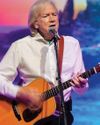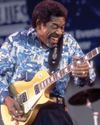
In this lesson I’m going to take a look at a couple of traditional pieces in DADGAD tuning – a tuning that for many is the default when it comes to playing this repertoire. The tuning found its origins in the 1960s via the travels of legendary British folk picker Davey Graham who used it to emulate the sounds of the Middle Eastern instruments he was encountering. Soon it was being used by everyone from Jimmy Page to Bert Jansch and was quickly adopted by the acoustic community as an ideal tuning for replicating traditional Irish and Scottish repertoire on guitar.
There are several reasons why the tuning works so well – first, there is a symmetry to it as you can use the open fourth (D), third (G) and fifth (A) strings to sound the I, IV and V harmony in the key of D. Secondly it is neither Major nor Minor in character, instead giving you a Dsus4 open chord which suggests the modal nature of much traditional music. A good tip with DADGAD is to get some orientation in place, so learn some basic chords and scales so you can start to see where things lie on the fretboard.
A first port of call for many DADGAD arrangers is the music of legendary Irish harper Turlough O’Carolan, whose compositions only exist as melodies meaning there are any number of directions the underlying harmony can take. I’ve kept The Lamentation Of Owen Roe O’Neill and Captain Kane in their written keys, B flat Major/G Minor and F Major/D Minor respectively, to show an extended range of what’s possible in DADGAD beyond just working in D (an obvious temptation).
THE TUNING FOUND ITS ORIGINS VIA THE TRAVELS OF FOLK PICKER DAVEY GRAHAM WHO USED IT TO EMULATE MIDDLE EASTERN INSTRUMENTS
TECHNIQUE FOCUS
DADGAD guitar
Esta historia es de la edición May 2020 de Guitar Techniques.
Comience su prueba gratuita de Magzter GOLD de 7 días para acceder a miles de historias premium seleccionadas y a más de 9,000 revistas y periódicos.
Ya eres suscriptor ? Conectar
Esta historia es de la edición May 2020 de Guitar Techniques.
Comience su prueba gratuita de Magzter GOLD de 7 días para acceder a miles de historias premium seleccionadas y a más de 9,000 revistas y periódicos.
Ya eres suscriptor? Conectar

THE MOODY BLUES
This month Stuart Ryan delves into the picking style of this British prog legend whose acoustic guitar has powered many a Moody Blues song.

WAYNE KRANTZ
This issue Nick Mellor provides an insight into this brilliant jazz stylist, focusing on his approach to improvising over static chords.

OPEN G TUNING
Open tunings are great fun and can help create exciting new ideas. Simon Barnard shows how to incorporate open G tuning into your playing.

RODRIGO GOUVEIA
Last month we featured Mateus Asato, and mentioned the importance of the neo-soul style in his playing. Here we turn to his fellow Brazilian, the master of neo-soul fusion.

MARK KNOPFLER
Our topic this month is a master craftsman as both guitar player and songwriter. His style is unique and his influence spreads far and wide.

U2
Martin Cooper checks out the chiming pedal delay tones of this stadium-filling band from Dublin, Ireland, and guitarist The Edge.

LUTHER ALLISON
It’s blues with a touch of soul this month, as David Gerrish explores the dynamic, expressive style of an often overlooked Chicago bluesman.

JOHANN KASPAR MERTZ Capriccio
This month Declan Zapala explores the music of Austria at the turn of the Romantic period with a fiery caprice to level up your fingers and unlock your inner virtuoso.

THE CROSSROADS Michael Landau
John Wheatcroft explores the playing of a session ace _ and blazing blues-rock maestro who graces the top-flight m band of singer-songwriting legend, James Taylor.

VIDEO MASTERCLASS Troy Redfern
This month GT welcomes this slide guitar virtuoso. If you've been wanting to take your slide playing to the next level then this is one's for you. With Jon Bishop.